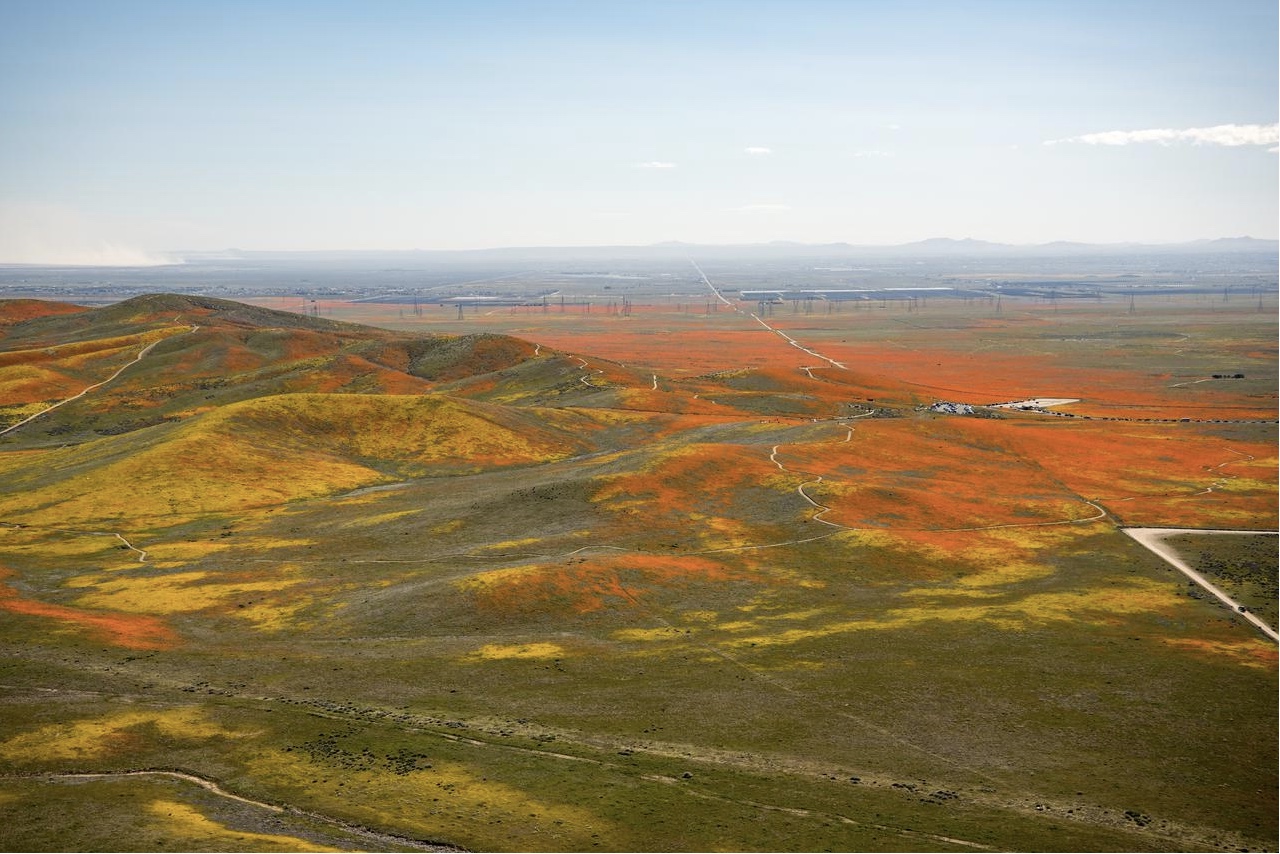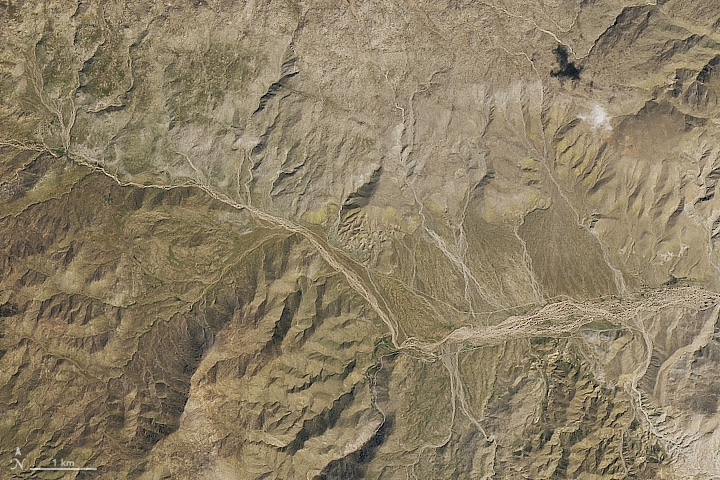Orange Lush: California's 'Superbloom' Wows from the Air

California's "superbloom" appears in almost unbelievable color in a new aerial image from NASA.
The shot comes courtesy NASA Armstrong Flight Research Center aerial photographer Jim Ross, who snapped it from a T-34 airplane on April 2. The image shows Southern California's Antelope Valley carpeted in wildflowers.
The spray of color is an annual event, made more intense by this year's wet winter in California. When the flowers are as dramatic as this year's display, they're called a "superbloom." The last drought-busting season that resulted in a superbloom in California was in 2017.
The desert environment of Southern California might seem a strange spot for wildflowers, but the orange California poppy (Eschscholzia californica) is well suited for hot environments. According to the U.S. Forest Service, the plants bloom in the spring and then go dormant in the heat of summer, allowing their tops to die off and surviving underground as a taproot. [Photos: The Sonoran Desert in Bloom]
NASA Armstrong's T-34 doesn't usually stop and smell the flowers; it's a training and mission support aircraft that often accompanies research flights for safety and documentation purposes. But the flight research center is near the Antelope Valley California Poppy Reserve, and Ross snapped the photos during a flight with Armstrong director of Safety and Mission Assurance and astronaut Rex Walheim.
The aerial view is more impressive than the view from space. In March, NASA released a shot of the wildflower bloom in Anza-Borrego Desert Park captured by the Landsat-8 satellite. From Earth's orbit, the vivid flowers blend in with the desert, leaving only the slightest hint of pale color detectable.

- Photos: The Vibrant Wildflowers of Carrizo National Monument
- In Images: Stunning Flower Fields of the Atacama Desert
- Stunning Images of a California Superbloom
Originally published on Live Science.
Get the Space.com Newsletter
Breaking space news, the latest updates on rocket launches, skywatching events and more!
Join our Space Forums to keep talking space on the latest missions, night sky and more! And if you have a news tip, correction or comment, let us know at: community@space.com.

Stephanie Pappas is a contributing writer for Space.com sister site Live Science, covering topics ranging from geoscience to archaeology to the human brain and behavior. She was previously a senior writer for Live Science but is now a freelancer based in Denver, Colorado, and regularly contributes to Scientific American and The Monitor, the monthly magazine of the American Psychological Association. Stephanie received a bachelor's degree in psychology from the University of South Carolina and a graduate certificate in science communication from the University of California, Santa Cruz.










